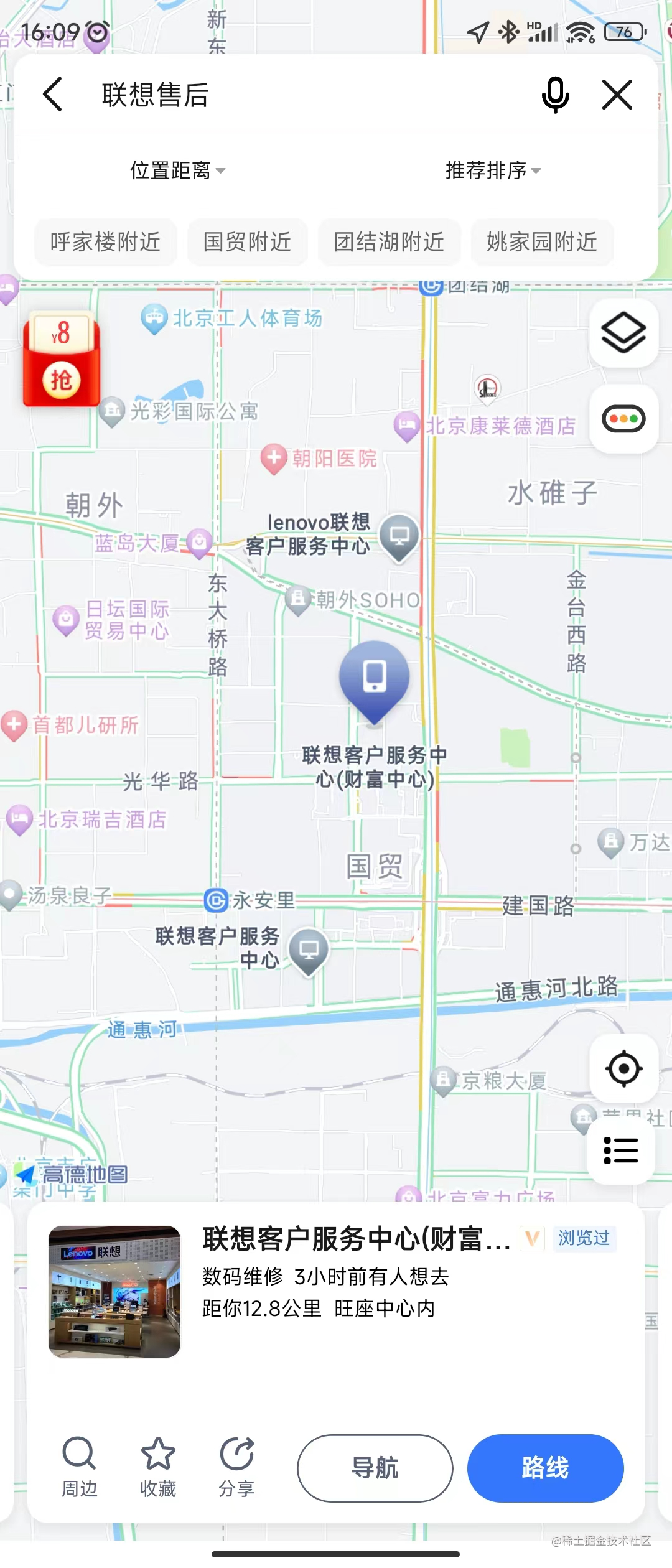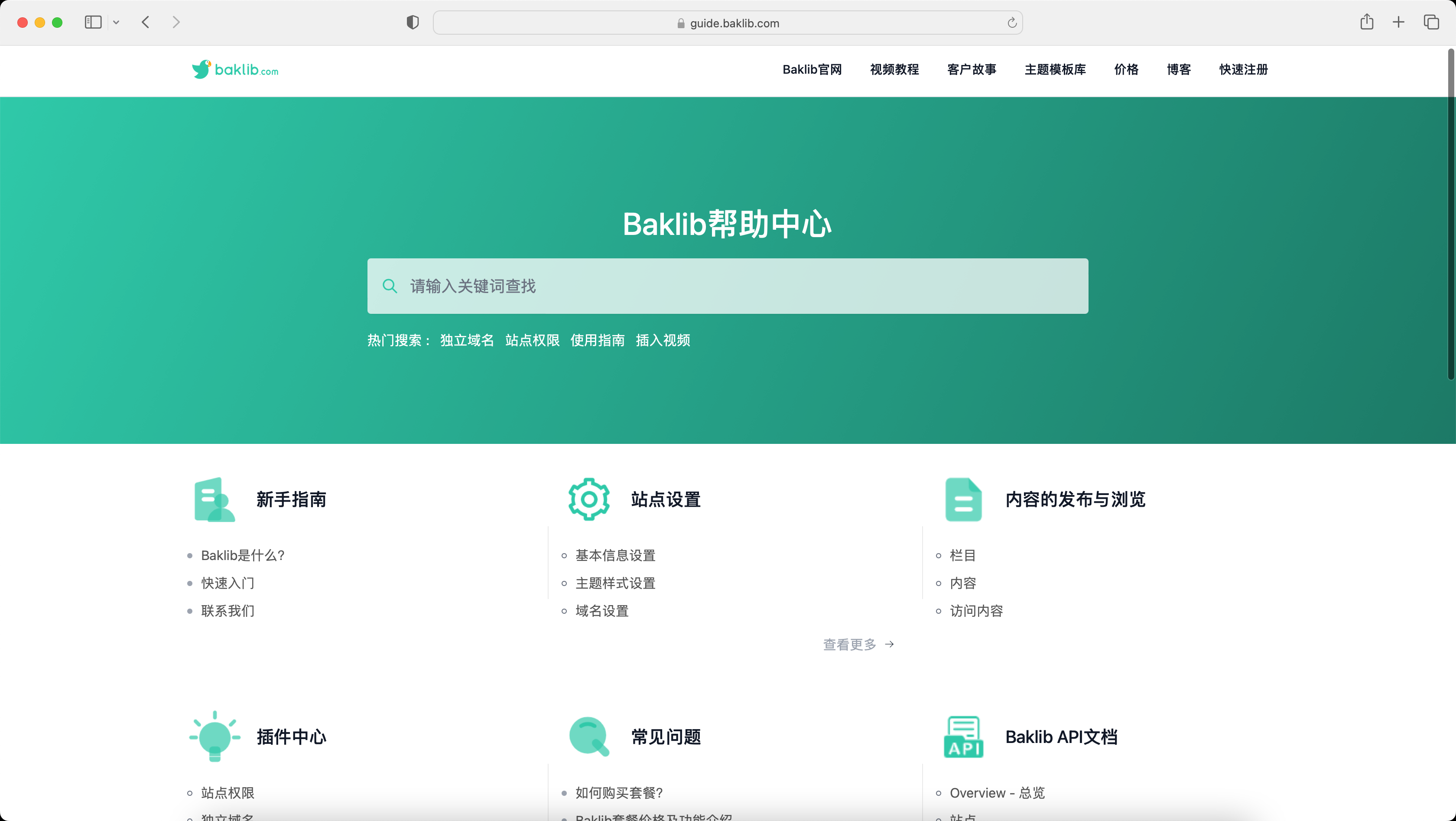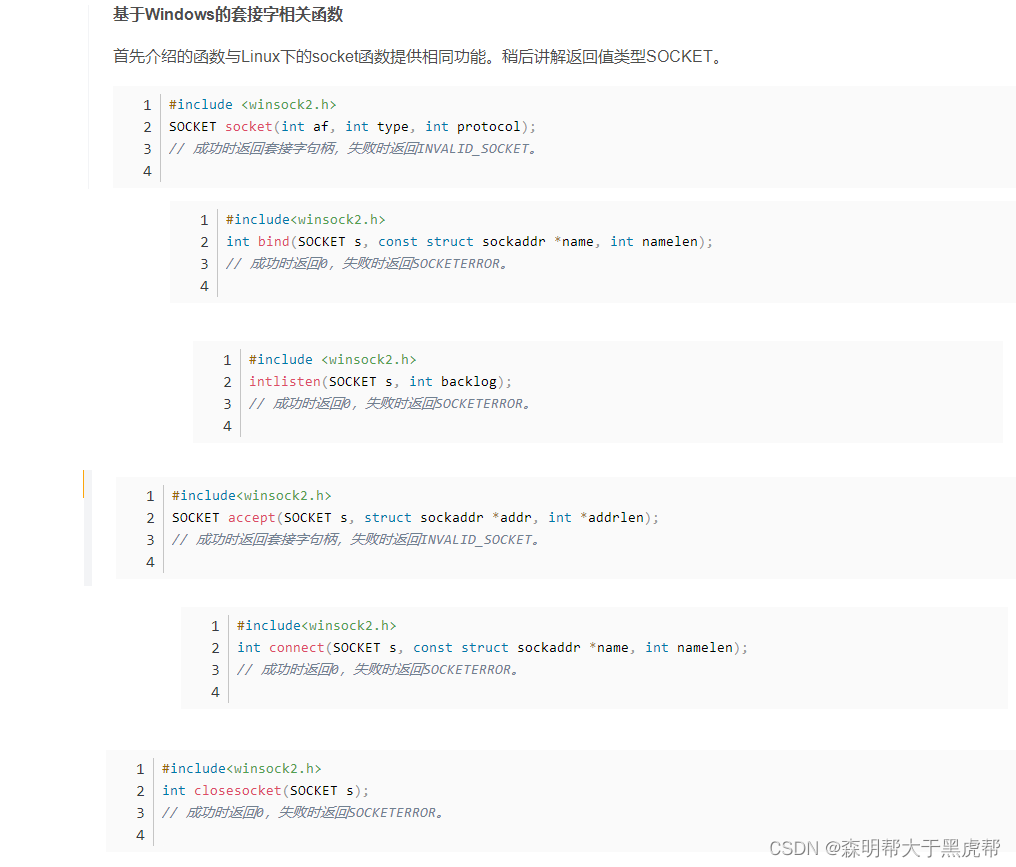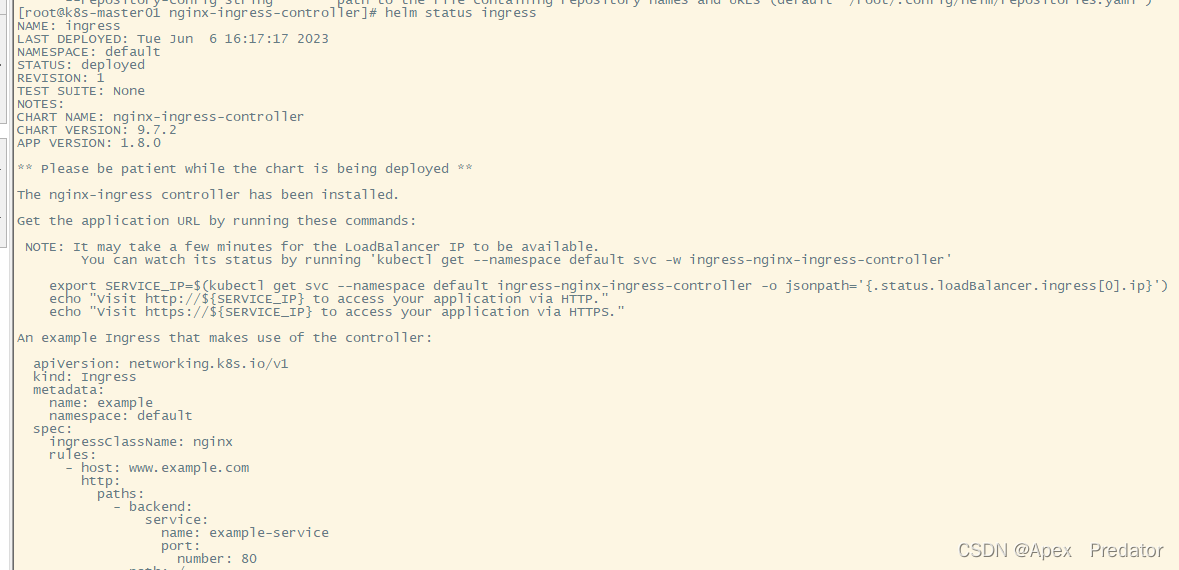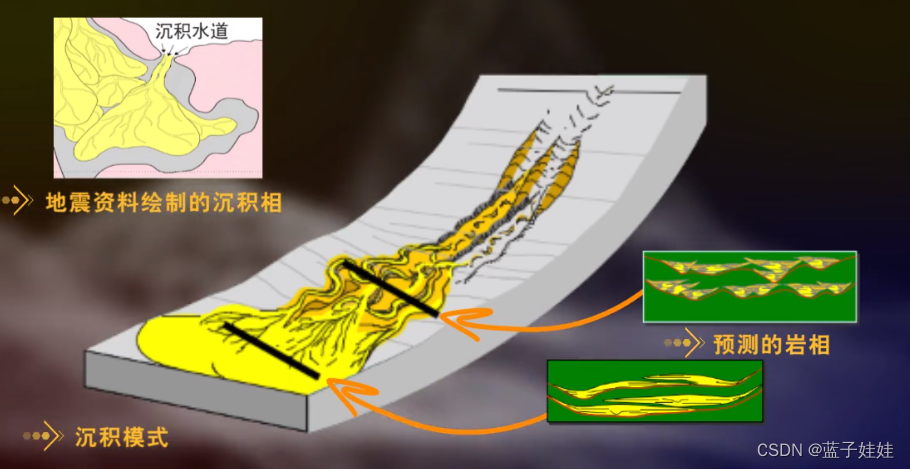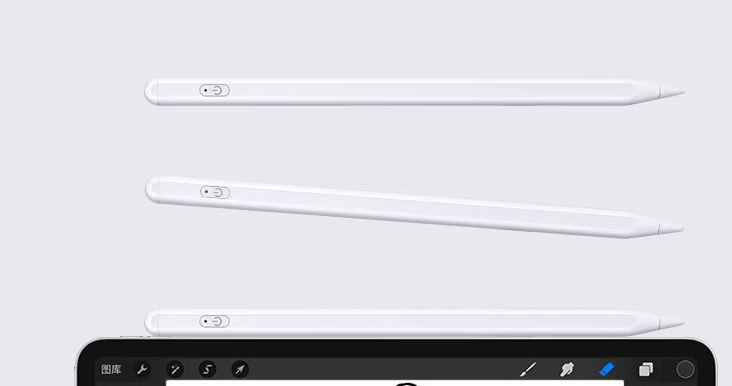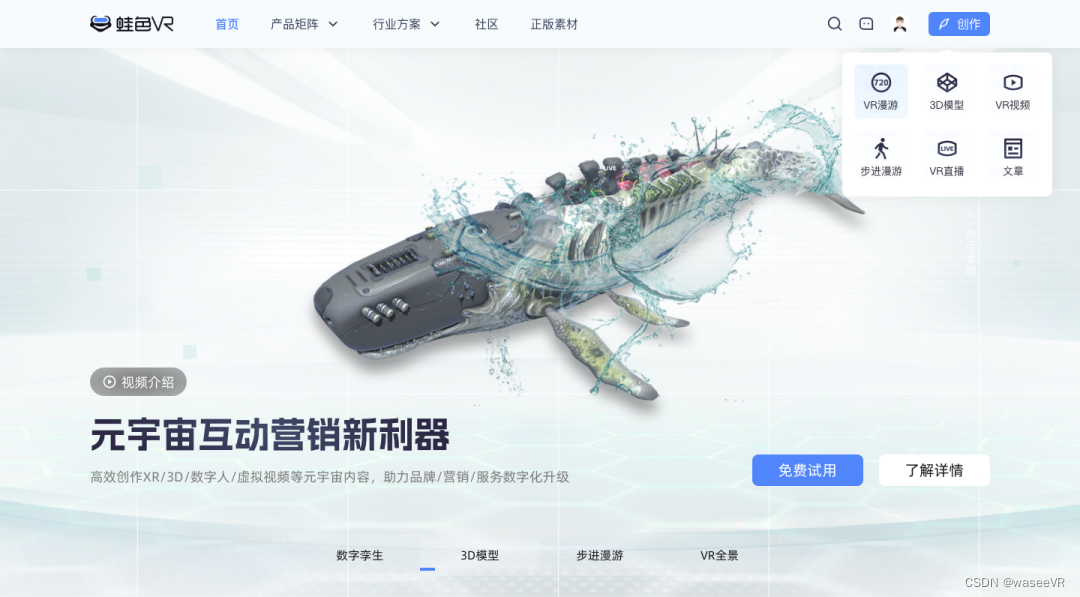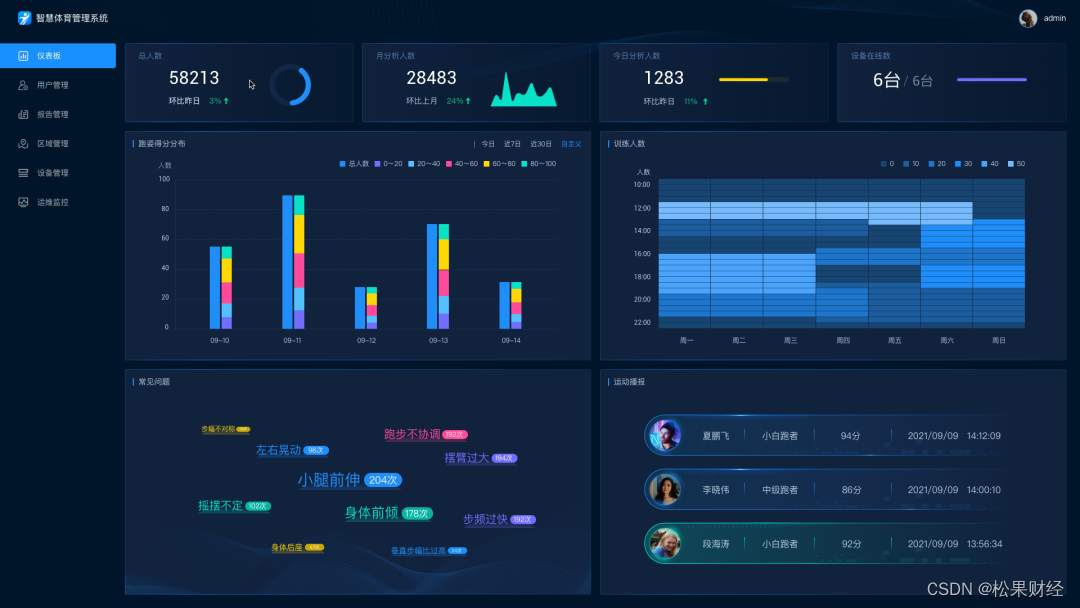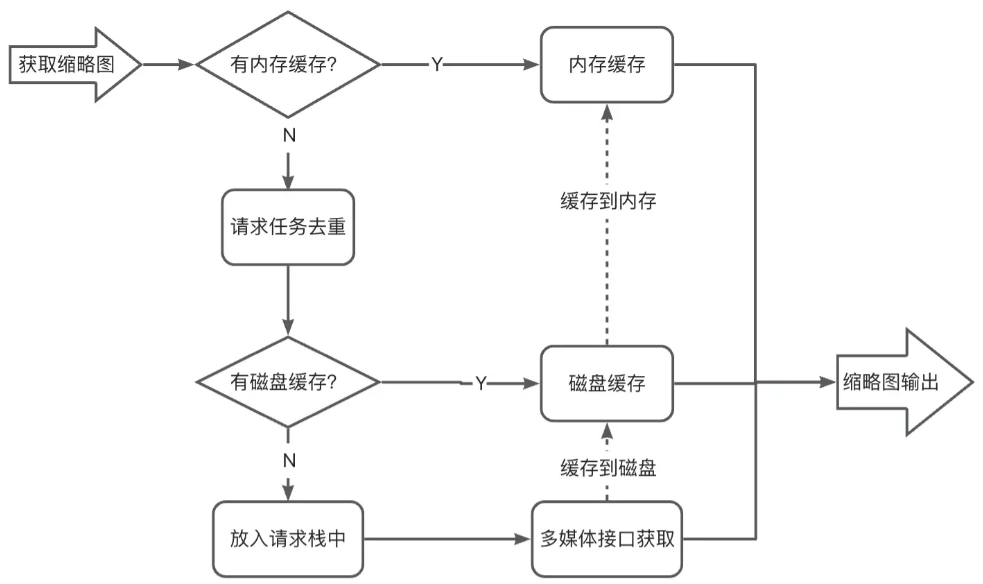kubelet源码分析 kuberuntime的syncpod、createSandbox/createContainer函数(三)
上一篇介绍了killContainer容器部分。当kill后,就需要重新创建sandbox和container,今天介绍最后一部分,创建容器。
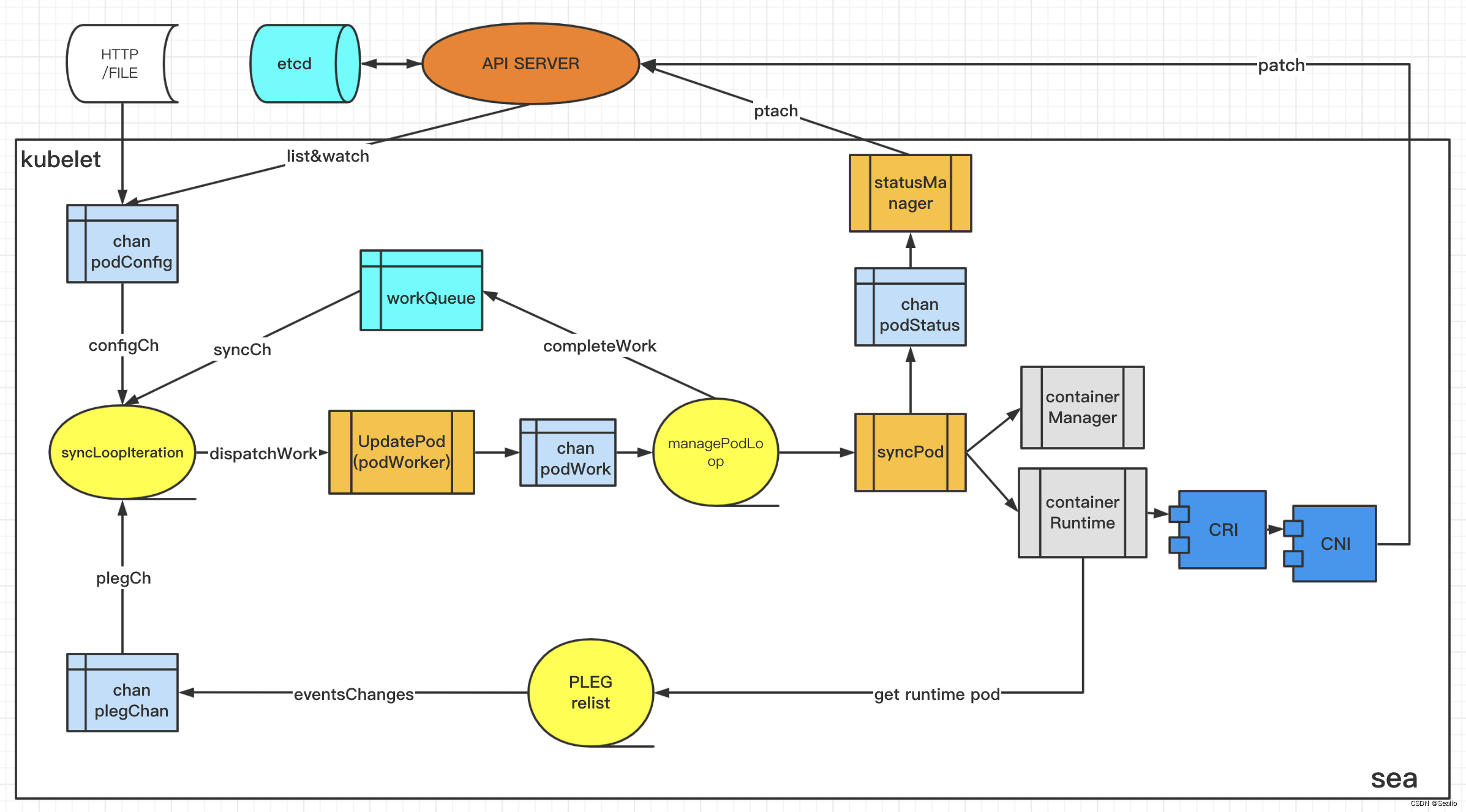
这篇也是整个上面的流程图中最后一步,containerManager的管理
一、syncPod
1.1 syncPod
- 设置一下返回结果
- 创建podsandbox,步骤1.2介绍
- 如果创建失败,记录并返回
- 创建成功,获得sandbox的状态
- 如果没有使用主机网络,获得ips
- 注册回调函数(这个函数就是创建容器函数)
- 使用回调函数,创建临时容器,init容器,普通容器(二、startContainer)介绍
if podContainerChanges.CreateSandbox {
var msg string
var err error
klog.V(4).InfoS("Creating PodSandbox for pod", "pod", klog.KObj(pod))
metrics.StartedPodsTotal.Inc()
//设置一下返回结果
createSandboxResult := kubecontainer.NewSyncResult(kubecontainer.CreatePodSandbox, format.Pod(pod))
result.AddSyncResult(createSandboxResult)
if utilfeature.DefaultFeatureGate.Enabled(features.DynamicResourceAllocation) {
if m.runtimeHelper.PrepareDynamicResources(pod) != nil {
return
}
}
//创建podsandbox,步骤1.2介绍
podSandboxID, msg, err = m.createPodSandbox(ctx, pod, podContainerChanges.Attempt)
if err != nil {
//如果创建失败,记录并返回
if m.podStateProvider.IsPodTerminationRequested(pod.UID) {
klog.V(4).InfoS("Pod was deleted and sandbox failed to be created", "pod", klog.KObj(pod), "podUID", pod.UID)
return
}
metrics.StartedPodsErrorsTotal.Inc()
createSandboxResult.Fail(kubecontainer.ErrCreatePodSandbox, msg)
klog.ErrorS(err, "CreatePodSandbox for pod failed", "pod", klog.KObj(pod))
ref, referr := ref.GetReference(legacyscheme.Scheme, pod)
if referr != nil {
klog.ErrorS(referr, "Couldn't make a ref to pod", "pod", klog.KObj(pod))
}
m.recorder.Eventf(ref, v1.EventTypeWarning, events.FailedCreatePodSandBox, "Failed to create pod sandbox: %v", err)
return
}
klog.V(4).InfoS("Created PodSandbox for pod", "podSandboxID", podSandboxID, "pod", klog.KObj(pod))
//创建成功,获得sandbox的状态
resp, err := m.runtimeService.PodSandboxStatus(ctx, podSandboxID, false)
if err != nil {
ref, referr := ref.GetReference(legacyscheme.Scheme, pod)
if referr != nil {
klog.ErrorS(referr, "Couldn't make a ref to pod", "pod", klog.KObj(pod))
}
m.recorder.Eventf(ref, v1.EventTypeWarning, events.FailedStatusPodSandBox, "Unable to get pod sandbox status: %v", err)
klog.ErrorS(err, "Failed to get pod sandbox status; Skipping pod", "pod", klog.KObj(pod))
result.Fail(err)
return
}
if resp.GetStatus() == nil {
result.Fail(errors.New("pod sandbox status is nil"))
return
}
//如果没有使用主机网络,获得ips
if !kubecontainer.IsHostNetworkPod(pod) {
podIPs = m.determinePodSandboxIPs(pod.Namespace, pod.Name, resp.GetStatus())
klog.V(4).InfoS("Determined the ip for pod after sandbox changed", "IPs", podIPs, "pod", klog.KObj(pod))
}
}
podIP := ""
if len(podIPs) != 0 {
podIP = podIPs[0]
}
//注册一下返回结果
configPodSandboxResult := kubecontainer.NewSyncResult(kubecontainer.ConfigPodSandbox, podSandboxID)
result.AddSyncResult(configPodSandboxResult)
podSandboxConfig, err := m.generatePodSandboxConfig(pod, podContainerChanges.Attempt)
if err != nil {
message := fmt.Sprintf("GeneratePodSandboxConfig for pod %q failed: %v", format.Pod(pod), err)
klog.ErrorS(err, "GeneratePodSandboxConfig for pod failed", "pod", klog.KObj(pod))
configPodSandboxResult.Fail(kubecontainer.ErrConfigPodSandbox, message)
return
}
//注册回调函数(这个函数就是创建容器函数)
start := func(ctx context.Context, typeName, metricLabel string, spec *startSpec) error {
startContainerResult := kubecontainer.NewSyncResult(kubecontainer.StartContainer, spec.container.Name)
result.AddSyncResult(startContainerResult)
//如果是回滚的,则取消创建
isInBackOff, msg, err := m.doBackOff(pod, spec.container, podStatus, backOff)
if isInBackOff {
startContainerResult.Fail(err, msg)
klog.V(4).InfoS("Backing Off restarting container in pod", "containerType", typeName, "container", spec.container, "pod", klog.KObj(pod))
return err
}
metrics.StartedContainersTotal.WithLabelValues(metricLabel).Inc()
if sc.HasWindowsHostProcessRequest(pod, spec.container) {
metrics.StartedHostProcessContainersTotal.WithLabelValues(metricLabel).Inc()
}
klog.V(4).InfoS("Creating container in pod", "containerType", typeName, "container", spec.container, "pod", klog.KObj(pod))
//启动容器(二、startContainer介绍)
if msg, err := m.startContainer(ctx, podSandboxID, podSandboxConfig, spec, pod, podStatus, pullSecrets, podIP, podIPs); err != nil {
metrics.StartedContainersErrorsTotal.WithLabelValues(metricLabel, err.Error()).Inc()
if sc.HasWindowsHostProcessRequest(pod, spec.container) {
metrics.StartedHostProcessContainersErrorsTotal.WithLabelValues(metricLabel, err.Error()).Inc()
}
startContainerResult.Fail(err, msg)
// repetitive log spam
switch {
case err == images.ErrImagePullBackOff:
klog.V(3).InfoS("Container start failed in pod", "containerType", typeName, "container", spec.container, "pod", klog.KObj(pod), "containerMessage", msg, "err", err)
default:
utilruntime.HandleError(fmt.Errorf("%v %+v start failed in pod %v: %v: %s", typeName, spec.container, format.Pod(pod), err, msg))
}
return err
}
return nil
}
// Step 5:启动临时容器
for _, idx := range podContainerChanges.EphemeralContainersToStart {
start(ctx, "ephemeral container", metrics.EphemeralContainer, ephemeralContainerStartSpec(&pod.Spec.EphemeralContainers[idx]))
}
// Step 6: 启动init容器
if container := podContainerChanges.NextInitContainerToStart; container != nil {
// 启动init
if err := start(ctx, "init container", metrics.InitContainer, containerStartSpec(container)); err != nil {
return
}
klog.V(4).InfoS("Completed init container for pod", "containerName", container.Name, "pod", klog.KObj(pod))
}
// Step 7: 如果是热更新,改变一下资源请求
if isInPlacePodVerticalScalingAllowed(pod) {
if len(podContainerChanges.ContainersToUpdate) > 0 || podContainerChanges.UpdatePodResources {
m.doPodResizeAction(pod, podStatus, podContainerChanges, result)
}
}
// Step 8: 启动容器
for _, idx := range podContainerChanges.ContainersToStart {
start(ctx, "container", metrics.Container, containerStartSpec(&pod.Spec.Containers[idx]))
}
return
1.2 CreateSandbox
- 生成启动sandbox的配置信息。1.3generatePodSandboxConfig介绍
- 创建目录
- 启动sandbox。不详介绍,和上一张一样。这里最终通过grpc调用CRI去创建
func (m *kubeGenericRuntimeManager) createPodSandbox(ctx context.Context, pod *v1.Pod, attempt uint32) (string, string, error) {
//生成启动sandbox的配置信息。1.3generatePodSandboxConfig介绍
podSandboxConfig, err := m.generatePodSandboxConfig(pod, attempt)
if err != nil {
message := fmt.Sprintf("Failed to generate sandbox config for pod %q: %v", format.Pod(pod), err)
klog.ErrorS(err, "Failed to generate sandbox config for pod", "pod", klog.KObj(pod))
return "", message, err
}
// 创建目录
err = m.osInterface.MkdirAll(podSandboxConfig.LogDirectory, 0755)
if err != nil {
message := fmt.Sprintf("Failed to create log directory for pod %q: %v", format.Pod(pod), err)
klog.ErrorS(err, "Failed to create log directory for pod", "pod", klog.KObj(pod))
return "", message, err
}
runtimeHandler := ""
if m.runtimeClassManager != nil {
runtimeHandler, err = m.runtimeClassManager.LookupRuntimeHandler(pod.Spec.RuntimeClassName)
if err != nil {
message := fmt.Sprintf("Failed to create sandbox for pod %q: %v", format.Pod(pod), err)
return "", message, err
}
if runtimeHandler != "" {
klog.V(2).InfoS("Running pod with runtime handler", "pod", klog.KObj(pod), "runtimeHandler", runtimeHandler)
}
}
//启动sandbox。不详介绍,和上一张一样。这里最终通过grpc调用CRI去创建
podSandBoxID, err := m.runtimeService.RunPodSandbox(ctx, podSandboxConfig, runtimeHandler)
if err != nil {
message := fmt.Sprintf("Failed to create sandbox for pod %q: %v", format.Pod(pod), err)
klog.ErrorS(err, "Failed to create sandbox for pod", "pod", klog.KObj(pod))
return "", message, err
}
return podSandBoxID, "", nil
}
1.3generatePodSandboxConfig
- 初始化配置数据
- 获取dns
- 如果没有使用主机网络,则获得host
- 创建目录
- 注册所需要的port端口
- 更新配置以包括开销、沙盒级资源
func (m *kubeGenericRuntimeManager) generatePodSandboxConfig(pod *v1.Pod, attempt uint32) (*runtimeapi.PodSandboxConfig, error) {
//初始化配置数据
podUID := string(pod.UID)
podSandboxConfig := &runtimeapi.PodSandboxConfig{
Metadata: &runtimeapi.PodSandboxMetadata{
Name: pod.Name,
Namespace: pod.Namespace,
Uid: podUID,
Attempt: attempt,
},
Labels: newPodLabels(pod),
Annotations: newPodAnnotations(pod),
}
//获取dns
dnsConfig, err := m.runtimeHelper.GetPodDNS(pod)
if err != nil {
return nil, err
}
podSandboxConfig.DnsConfig = dnsConfig
//如果没有使用主机网络,则获得host
if !kubecontainer.IsHostNetworkPod(pod) {
podHostname, podDomain, err := m.runtimeHelper.GeneratePodHostNameAndDomain(pod)
if err != nil {
return nil, err
}
podHostname, err = util.GetNodenameForKernel(podHostname, podDomain, pod.Spec.SetHostnameAsFQDN)
if err != nil {
return nil, err
}
podSandboxConfig.Hostname = podHostname
}
//创建目录
logDir := BuildPodLogsDirectory(pod.Namespace, pod.Name, pod.UID)
podSandboxConfig.LogDirectory = logDir
//注册所需要的port端口
portMappings := []*runtimeapi.PortMapping{}
for _, c := range pod.Spec.Containers {
containerPortMappings := kubecontainer.MakePortMappings(&c)
for idx := range containerPortMappings {
port := containerPortMappings[idx]
hostPort := int32(port.HostPort)
containerPort := int32(port.ContainerPort)
protocol := toRuntimeProtocol(port.Protocol)
portMappings = append(portMappings, &runtimeapi.PortMapping{
HostIp: port.HostIP,
HostPort: hostPort,
ContainerPort: containerPort,
Protocol: protocol,
})
}
}
if len(portMappings) > 0 {
podSandboxConfig.PortMappings = portMappings
}
lc, err := m.generatePodSandboxLinuxConfig(pod)
if err != nil {
return nil, err
}
podSandboxConfig.Linux = lc
if runtime.GOOS == "windows" {
wc, err := m.generatePodSandboxWindowsConfig(pod)
if err != nil {
return nil, err
}
podSandboxConfig.Windows = wc
}
// 更新配置以包括开销、沙盒级资源
if err := m.applySandboxResources(pod, podSandboxConfig); err != nil {
return nil, err
}
return podSandboxConfig, nil
}
二、startContainer
- 拉取镜像 2.1pullimage介绍
- Step 2: 创建容器
- 初始化重启次数初始化0
- 如果存在,则重启次数+1。不存在创建目录
- 获得创建container的基础配置2.2generateContainerConfig介绍
- 记录event
- 创建容器之前的准备
- 创建容器 最终通过grpc调用CRI去创建
- PreStart 阶段:在容器启动之前执行预处理操作,例如添加容器到资源管理器中进行资源分配。
- Step 3:启动容器。最终通过grpc调用CRI去启动
- 记录event日志
- Step 4: 执行 post start
- 最终通过grpc调用CRI去启动
func (m *kubeGenericRuntimeManager) startContainer(ctx context.Context, podSandboxID string, podSandboxConfig *runtimeapi.PodSandboxConfig, spec *startSpec, pod *v1.Pod, podStatus *kubecontainer.PodStatus, pullSecrets []v1.Secret, podIP string, podIPs []string) (string, error) {
container := spec.container
// Step 1: 拉取镜像
imageRef, msg, err := m.imagePuller.EnsureImageExists(ctx, pod, container, pullSecrets, podSandboxConfig)
if err != nil {
s, _ := grpcstatus.FromError(err)
m.recordContainerEvent(pod, container, "", v1.EventTypeWarning, events.FailedToCreateContainer, "Error: %v", s.Message())
return msg, err
}
// Step 2: 创建容器
//重启次数初始化0
restartCount := 0
containerStatus := podStatus.FindContainerStatusByName(container.Name)
//如果存在,则重启次数+1
if containerStatus != nil {
restartCount = containerStatus.RestartCount + 1
} else {
//不存在创建目录
logDir := BuildContainerLogsDirectory(pod.Namespace, pod.Name, pod.UID, container.Name)
restartCount, err = calcRestartCountByLogDir(logDir)
if err != nil {
klog.InfoS("Cannot calculate restartCount from the log directory", "logDir", logDir, "err", err)
restartCount = 0
}
}
target, err := spec.getTargetID(podStatus)
if err != nil {
s, _ := grpcstatus.FromError(err)
m.recordContainerEvent(pod, container, "", v1.EventTypeWarning, events.FailedToCreateContainer, "Error: %v", s.Message())
return s.Message(), ErrCreateContainerConfig
}
//获得创建container的基础配置2.2generateContainerConfig介绍
containerConfig, cleanupAction, err := m.generateContainerConfig(ctx, container, pod, restartCount, podIP, imageRef, podIPs, target)
if cleanupAction != nil {
defer cleanupAction()
}
if err != nil {
s, _ := grpcstatus.FromError(err)
//记录event
m.recordContainerEvent(pod, container, "", v1.EventTypeWarning, events.FailedToCreateContainer, "Error: %v", s.Message())
return s.Message(), ErrCreateContainerConfig
}
//创建容器之前的准备
err = m.internalLifecycle.PreCreateContainer(pod, container, containerConfig)
if err != nil {
s, _ := grpcstatus.FromError(err)
m.recordContainerEvent(pod, container, "", v1.EventTypeWarning, events.FailedToCreateContainer, "Internal PreCreateContainer hook failed: %v", s.Message())
return s.Message(), ErrPreCreateHook
}
//创建容器 最终通过grpc调用CRI去创建
containerID, err := m.runtimeService.CreateContainer(ctx, podSandboxID, containerConfig, podSandboxConfig)
if err != nil {
s, _ := grpcstatus.FromError(err)
m.recordContainerEvent(pod, container, containerID, v1.EventTypeWarning, events.FailedToCreateContainer, "Error: %v", s.Message())
return s.Message(), ErrCreateContainer
}
//PreStart 阶段:在容器启动之前执行预处理操作,例如添加容器到资源管理器中进行资源分配。
err = m.internalLifecycle.PreStartContainer(pod, container, containerID)
if err != nil {
s, _ := grpcstatus.FromError(err)
m.recordContainerEvent(pod, container, containerID, v1.EventTypeWarning, events.FailedToStartContainer, "Internal PreStartContainer hook failed: %v", s.Message())
return s.Message(), ErrPreStartHook
}
m.recordContainerEvent(pod, container, containerID, v1.EventTypeNormal, events.CreatedContainer, fmt.Sprintf("Created container %s", container.Name))
// Step 3:启动容器。最终通过grpc调用CRI去启动
err = m.runtimeService.StartContainer(ctx, containerID)
if err != nil {
s, _ := grpcstatus.FromError(err)
m.recordContainerEvent(pod, container, containerID, v1.EventTypeWarning, events.FailedToStartContainer, "Error: %v", s.Message())
return s.Message(), kubecontainer.ErrRunContainer
}
//记录event日志
m.recordContainerEvent(pod, container, containerID, v1.EventTypeNormal, events.StartedContainer, fmt.Sprintf("Started container %s", container.Name))
containerMeta := containerConfig.GetMetadata()
sandboxMeta := podSandboxConfig.GetMetadata()
legacySymlink := legacyLogSymlink(containerID, containerMeta.Name, sandboxMeta.Name,
sandboxMeta.Namespace)
containerLog := filepath.Join(podSandboxConfig.LogDirectory, containerConfig.LogPath)
if _, err := m.osInterface.Stat(containerLog); !os.IsNotExist(err) {
if err := m.osInterface.Symlink(containerLog, legacySymlink); err != nil {
klog.ErrorS(err, "Failed to create legacy symbolic link", "path", legacySymlink,
"containerID", containerID, "containerLogPath", containerLog)
}
}
// Step 4: 执行 post start
if container.Lifecycle != nil && container.Lifecycle.PostStart != nil {
kubeContainerID := kubecontainer.ContainerID{
Type: m.runtimeName,
ID: containerID,
}
//最终通过grpc调用CRI去启动
msg, handlerErr := m.runner.Run(ctx, kubeContainerID, pod, container, container.Lifecycle.PostStart)
if handlerErr != nil {
klog.ErrorS(handlerErr, "Failed to execute PostStartHook", "pod", klog.KObj(pod),
"podUID", pod.UID, "containerName", container.Name, "containerID", kubeContainerID.String())
m.recordContainerEvent(pod, container, kubeContainerID.ID, v1.EventTypeWarning, events.FailedPostStartHook, "PostStartHook failed")
if err := m.killContainer(ctx, pod, kubeContainerID, container.Name, "FailedPostStartHook", reasonFailedPostStartHook, nil); err != nil {
klog.ErrorS(err, "Failed to kill container", "pod", klog.KObj(pod),
"podUID", pod.UID, "containerName", container.Name, "containerID", kubeContainerID.String())
}
return msg, ErrPostStartHook
}
}
return "", nil
}
2.1pullimage
- 如果镜像没有tag,获取默认的(:latest)
- 生成Annotations
- 获得已经在本地存储的镜像id
- 如果本地没有代表需要拉取
- 如果不需要拉取。(验证拉取规则,这里就是判断不是always或者本地是否有了)
- 如果本地有且本地有,直接返回返回镜像id
- 本地没有,记录event
- 调用grpc去CRI拉取镜像。接收返回结果。
- 返回镜像id
func (m *imageManager) EnsureImageExists(ctx context.Context, pod *v1.Pod, container *v1.Container, pullSecrets []v1.Secret, podSandboxConfig *runtimeapi.PodSandboxConfig) (string, string, error) {
logPrefix := fmt.Sprintf("%s/%s/%s", pod.Namespace, pod.Name, container.Image)
ref, err := kubecontainer.GenerateContainerRef(pod, container)
if err != nil {
klog.ErrorS(err, "Couldn't make a ref to pod", "pod", klog.KObj(pod), "containerName", container.Name)
}
//如果镜像没有tag,获取默认的(:latest)
image, err := applyDefaultImageTag(container.Image)
if err != nil {
msg := fmt.Sprintf("Failed to apply default image tag %q: %v", container.Image, err)
m.logIt(ref, v1.EventTypeWarning, events.FailedToInspectImage, logPrefix, msg, klog.Warning)
return "", msg, ErrInvalidImageName
}
//生成Annotations
var podAnnotations []kubecontainer.Annotation
for k, v := range pod.GetAnnotations() {
podAnnotations = append(podAnnotations, kubecontainer.Annotation{
Name: k,
Value: v,
})
}
spec := kubecontainer.ImageSpec{
Image: image,
Annotations: podAnnotations,
}
//获得已经在本地存储的镜像id
imageRef, err := m.imageService.GetImageRef(ctx, spec)
if err != nil {
msg := fmt.Sprintf("Failed to inspect image %q: %v", container.Image, err)
m.logIt(ref, v1.EventTypeWarning, events.FailedToInspectImage, logPrefix, msg, klog.Warning)
return "", msg, ErrImageInspect
}
//如果本地没有代表需要拉取
present := imageRef != ""
//如果不需要拉取。(验证拉取规则,这里就是判断不是always或者本地是否有了)
if !shouldPullImage(container, present) {
//且本地有
if present {
msg := fmt.Sprintf("Container image %q already present on machine", container.Image)
m.logIt(ref, v1.EventTypeNormal, events.PulledImage, logPrefix, msg, klog.Info)
//返回镜像id
return imageRef, "", nil
}
msg := fmt.Sprintf("Container image %q is not present with pull policy of Never", container.Image)
m.logIt(ref, v1.EventTypeWarning, events.ErrImageNeverPullPolicy, logPrefix, msg, klog.Warning)
return "", msg, ErrImageNeverPull
}
backOffKey := fmt.Sprintf("%s_%s", pod.UID, container.Image)
if m.backOff.IsInBackOffSinceUpdate(backOffKey, m.backOff.Clock.Now()) {
msg := fmt.Sprintf("Back-off pulling image %q", container.Image)
m.logIt(ref, v1.EventTypeNormal, events.BackOffPullImage, logPrefix, msg, klog.Info)
return "", msg, ErrImagePullBackOff
}
//记录event
m.podPullingTimeRecorder.RecordImageStartedPulling(pod.UID)
m.logIt(ref, v1.EventTypeNormal, events.PullingImage, logPrefix, fmt.Sprintf("Pulling image %q", container.Image), klog.Info)
startTime := time.Now()
pullChan := make(chan pullResult)
//调用grpc去CRI拉取镜像
m.puller.pullImage(ctx, spec, pullSecrets, pullChan, podSandboxConfig)
//接收返回结果
imagePullResult := <-pullChan
if imagePullResult.err != nil {
m.logIt(ref, v1.EventTypeWarning, events.FailedToPullImage, logPrefix, fmt.Sprintf("Failed to pull image %q: %v", container.Image, imagePullResult.err), klog.Warning)
m.backOff.Next(backOffKey, m.backOff.Clock.Now())
if imagePullResult.err == ErrRegistryUnavailable {
msg := fmt.Sprintf("image pull failed for %s because the registry is unavailable.", container.Image)
return "", msg, imagePullResult.err
}
return "", imagePullResult.err.Error(), ErrImagePull
}
m.podPullingTimeRecorder.RecordImageFinishedPulling(pod.UID)
m.logIt(ref, v1.EventTypeNormal, events.PulledImage, logPrefix, fmt.Sprintf("Successfully pulled image %q in %v (%v including waiting)", container.Image, imagePullResult.pullDuration, time.Since(startTime)), klog.Info)
m.backOff.GC()
//返回镜像id
return imagePullResult.imageRef, "", nil
}
2.2generateContainerConfig
- 获得uid或用户名,该用户名将从图像中运行命令
- 验证RunAsNonRoot。非root验证只支持数字型用户。
- 配置cmmand和args命令
- 生成目录
- 初始化配置
- 设置平台特定的配置。
- 设置env
- 返回容器基本配置
func (m *kubeGenericRuntimeManager) generateContainerConfig(ctx context.Context, container *v1.Container, pod *v1.Pod, restartCount int, podIP, imageRef string, podIPs []string, nsTarget *kubecontainer.ContainerID) (*runtimeapi.ContainerConfig, func(), error) {
opts, cleanupAction, err := m.runtimeHelper.GenerateRunContainerOptions(ctx, pod, container, podIP, podIPs)
if err != nil {
return nil, nil, err
}
//获得uid或用户名,该用户名将从图像中运行命令
uid, username, err := m.getImageUser(ctx, container.Image)
if err != nil {
return nil, cleanupAction, err
}
// 验证RunAsNonRoot。非root验证只支持数字型用户。
if err := verifyRunAsNonRoot(pod, container, uid, username); err != nil {
return nil, cleanupAction, err
}
//配置cmmand和args命令
command, args := kubecontainer.ExpandContainerCommandAndArgs(container, opts.Envs)
//生成目录
logDir := BuildContainerLogsDirectory(pod.Namespace, pod.Name, pod.UID, container.Name)
err = m.osInterface.MkdirAll(logDir, 0755)
if err != nil {
return nil, cleanupAction, fmt.Errorf("create container log directory for container %s failed: %v", container.Name, err)
}
containerLogsPath := buildContainerLogsPath(container.Name, restartCount)
restartCountUint32 := uint32(restartCount)
//初始化配置
config := &runtimeapi.ContainerConfig{
Metadata: &runtimeapi.ContainerMetadata{
Name: container.Name,
Attempt: restartCountUint32,
},
Image: &runtimeapi.ImageSpec{Image: imageRef},
Command: command,
Args: args,
WorkingDir: container.WorkingDir,
Labels: newContainerLabels(container, pod),
Annotations: newContainerAnnotations(container, pod, restartCount, opts),
Devices: makeDevices(opts),
CDIDevices: makeCDIDevices(opts),
Mounts: m.makeMounts(opts, container),
LogPath: containerLogsPath,
Stdin: container.Stdin,
StdinOnce: container.StdinOnce,
Tty: container.TTY,
}
// 设置平台特定的配置。
if err := m.applyPlatformSpecificContainerConfig(config, container, pod, uid, username, nsTarget); err != nil {
return nil, cleanupAction, err
}
// 设置env
envs := make([]*runtimeapi.KeyValue, len(opts.Envs))
for idx := range opts.Envs {
e := opts.Envs[idx]
envs[idx] = &runtimeapi.KeyValue{
Key: e.Name,
Value: e.Value,
}
}
config.Envs = envs
return config, cleanupAction, nil
}
三、总结
到这里,一个kubectl apply的流程就走完了。最终会调用grpc去调用CRI去创建容器。
不管是创建、删除、修改等等操作,都是按照最上面的流程图的步骤来的,从一个pod的创建到最终的删除,都是按照流程图过来。流程图中所有的组件和功能也都详解介绍过了。感兴趣的可以翻历史文章查看。
上一篇:kubelet源码分析 kuberuntime的syncpod、killpod函数(二)

